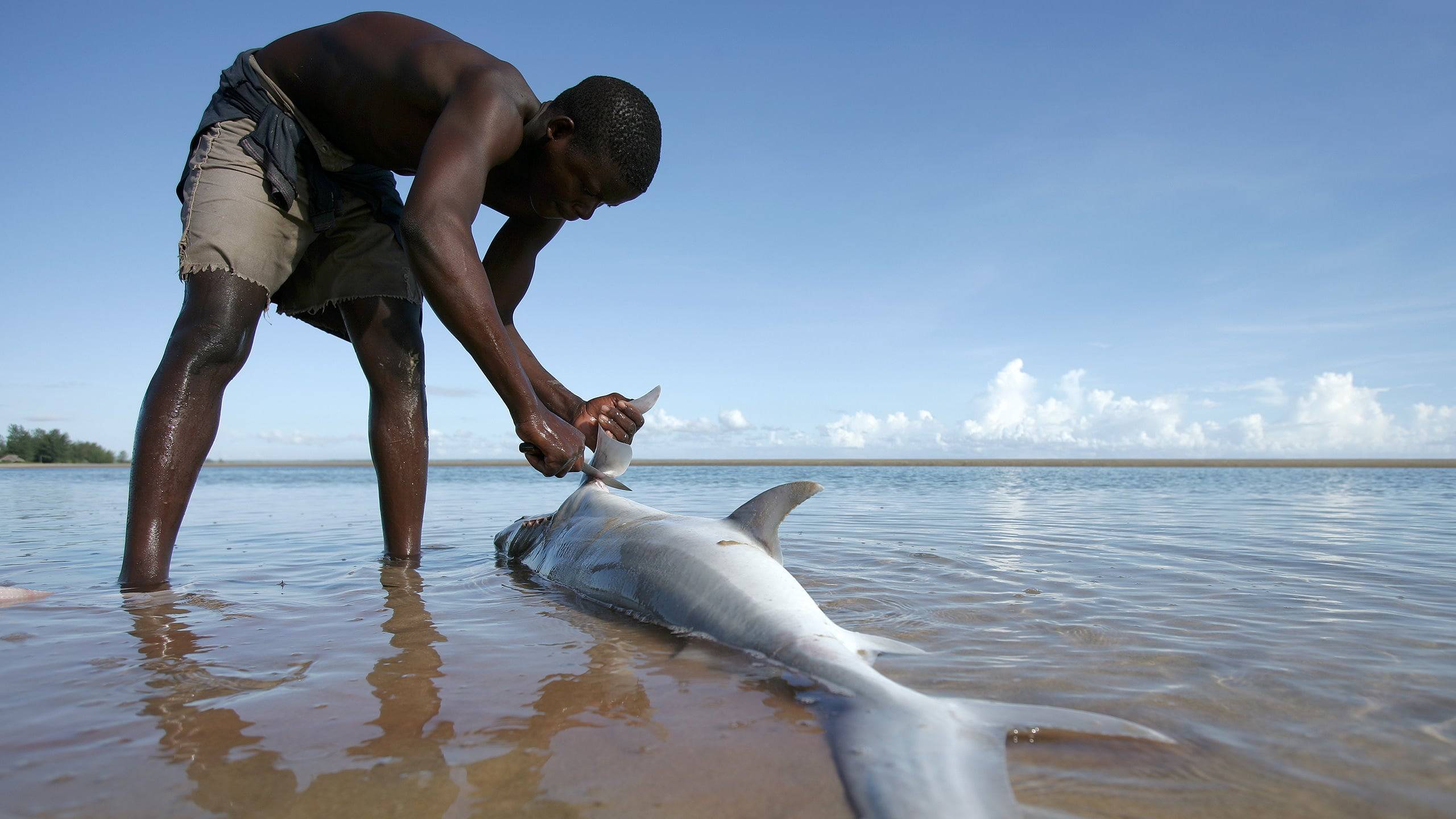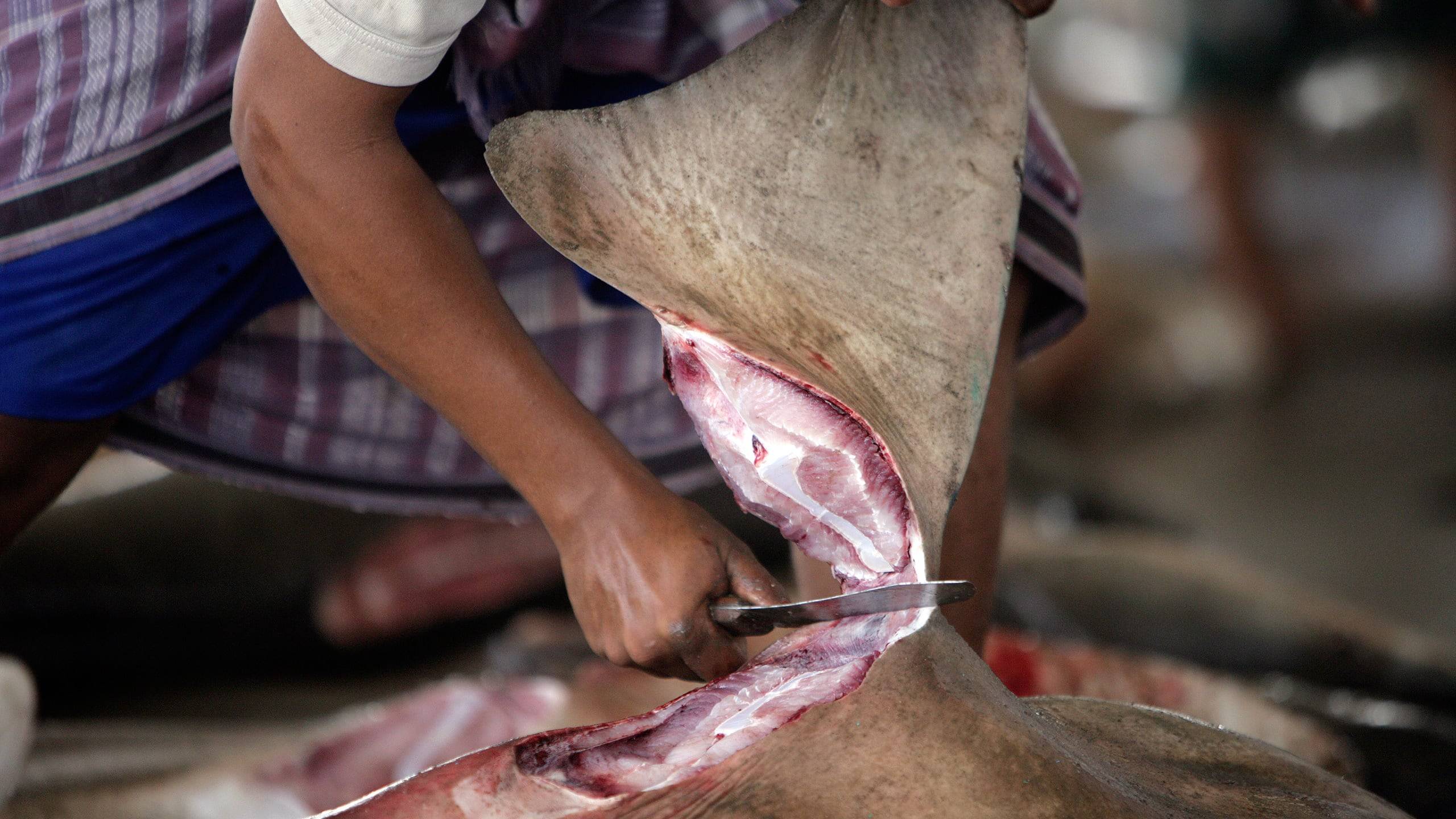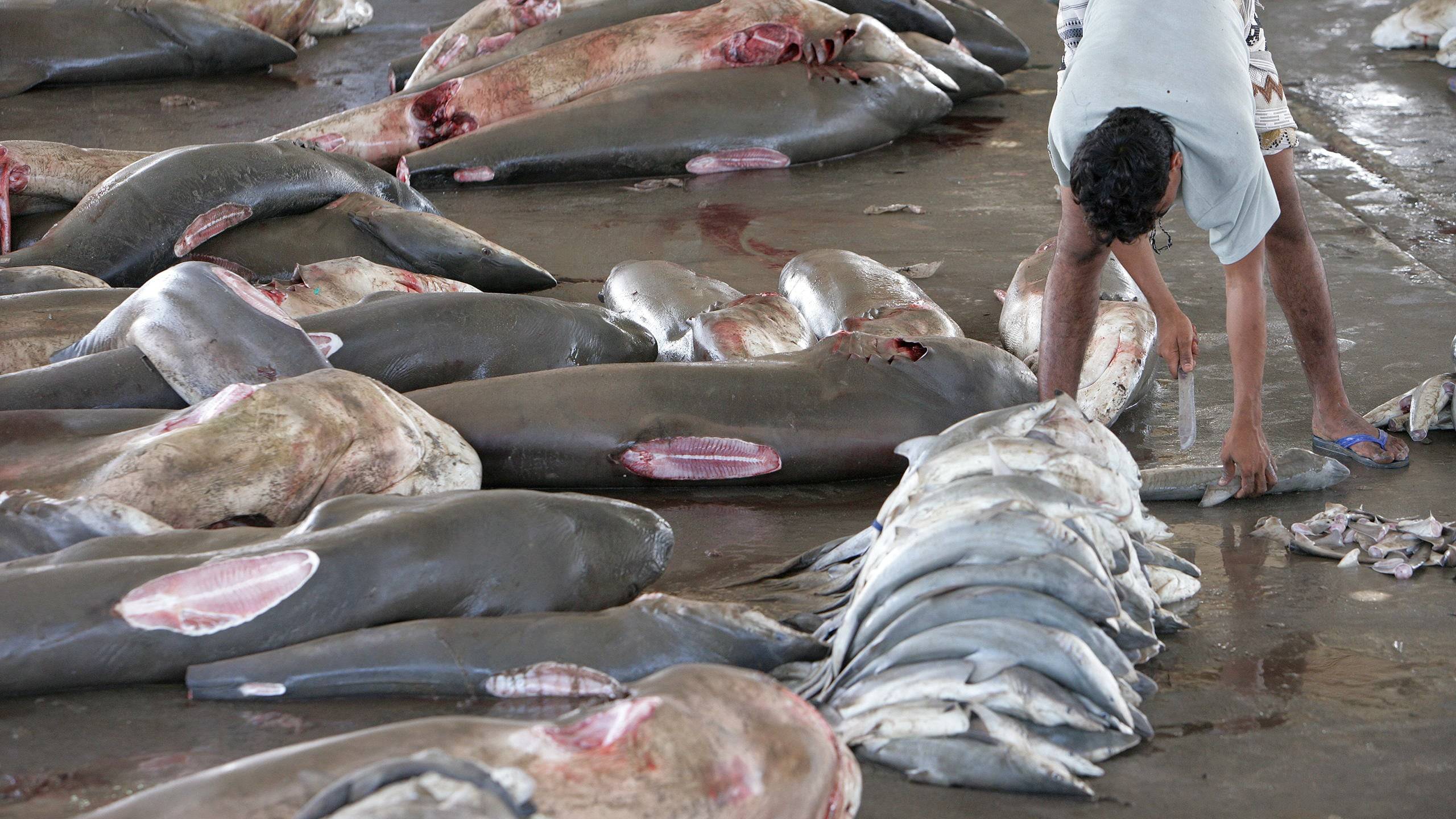Plastics, mikroplastics und manoplastics
Eight (8) million tons of plastic are washed into the oceans every year. Its size ranges from huge plastic sheets and ghost nets to microplastics smaller than 5 mm and nanoplastics in the range of less than 1 micron (a human hair is on average about 100 microns thick). Sharks and other sea creatures get entangled in the plastic, eat it and nanoplastics penetrate their organs and cells.
Plastic waste is flooding our oceans. Plastic is extremely durable and certain materials such as nylon can remain intact for centuries in the sea. Waves and currents cause plastic to break down into smaller and smaller pieces, thus creating among other things micro- and nanoplastics. Micro- and nanoplastic particles are also carried into the sea via human sewage and winds. They are created, for example, when washing our plastic textiles, in the processing industry and in paints and coatings.
Sea animals can get entangled in plastic waste and suffocate, or become unable to eat or easy prey due to their disability.
In the region of Java whale sharks ingest about 137 pieces of plastic during 1 hour of feeding!
If they eat plastic or microplastics, it remains undigested in the stomach for a long time and can cause severe injuries to the stomach and intestinal mucosa by chafing. It also clogs up the digestive system and the animals can even starve to death.
The most dangerous are probably the nanoplastics because little is known about their long-term effects. They are so small that they go from the stomach and intestines into the bloodstream, accumulating in various organs or even cells. The current aim of various research projects is to find out how harmful they are and which toxic chemicals get into organs and cells through nanoplastics.
Plastic, in whatever form, and environmental toxins accumulate in the food chain. They are absorbed directly and additionally via prey animals. Many sharks are top hunters and thus accumulate a great deal of plastic and toxins.








